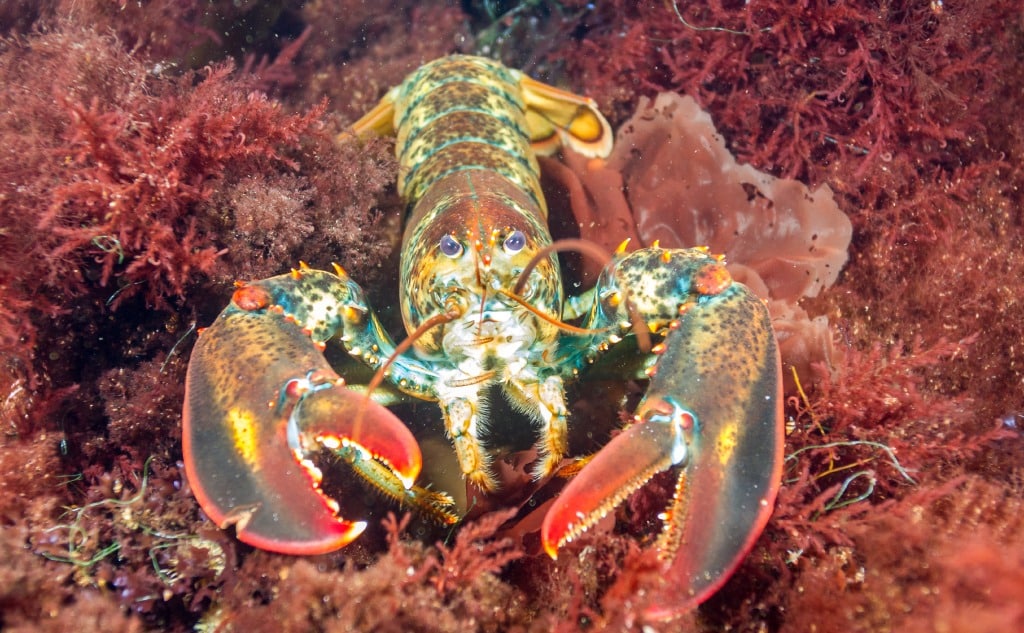This is about whether shrimps or lobsters are insects.
In short: shrimps and lobsters aren’t insects.
So if you want to know why shrimps and lobster aren’t insects, then you’re in the right place.
Let’s jump right in!
Shrimps and Lobsters Are Not Instects
This question might come to mind while sitting at the dining table looking at half-cooked shrimp prawns, expressing love or hatred for those tiny little creatures served on your plate.
Your taste in seafood depends upon your culture. Some people around the world might be surprised that someone would eat seafood.
The bottom line is that the shrimps and lobsters (crustaceans) may look like insects, but they are not insects by any definition found in biology.
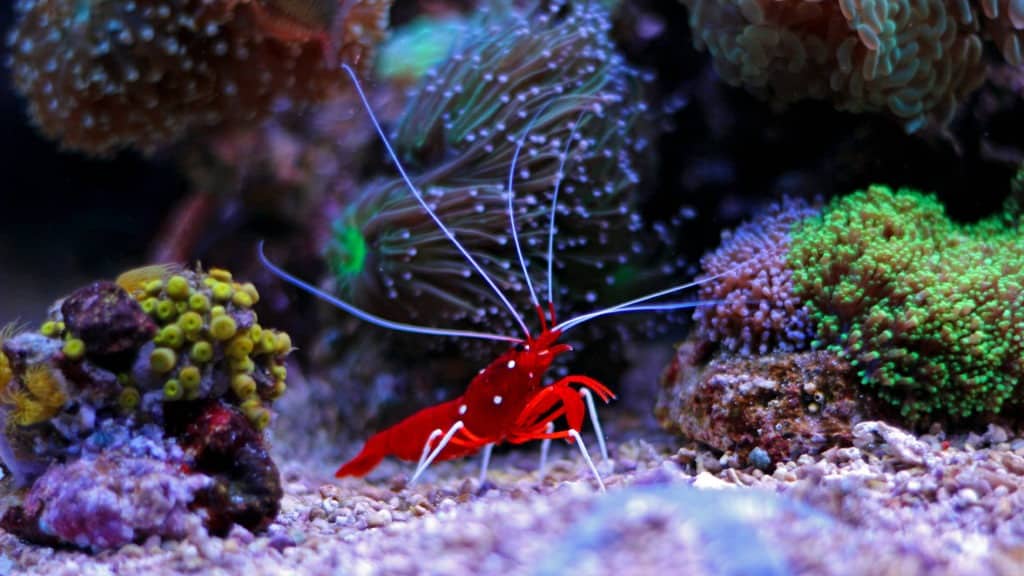
Both crustaceans and insects are arthropods, and both can be used as food. But the crustaceans are definitely the more popular dining fare.
Let’s take a closer look at how shrimps and lobsters differ from insects:
What Are Crustaceans?
To understand the characteristics of shrimp and lobster, you must know a bit about their class Crustacea of phylum Arthropoda.
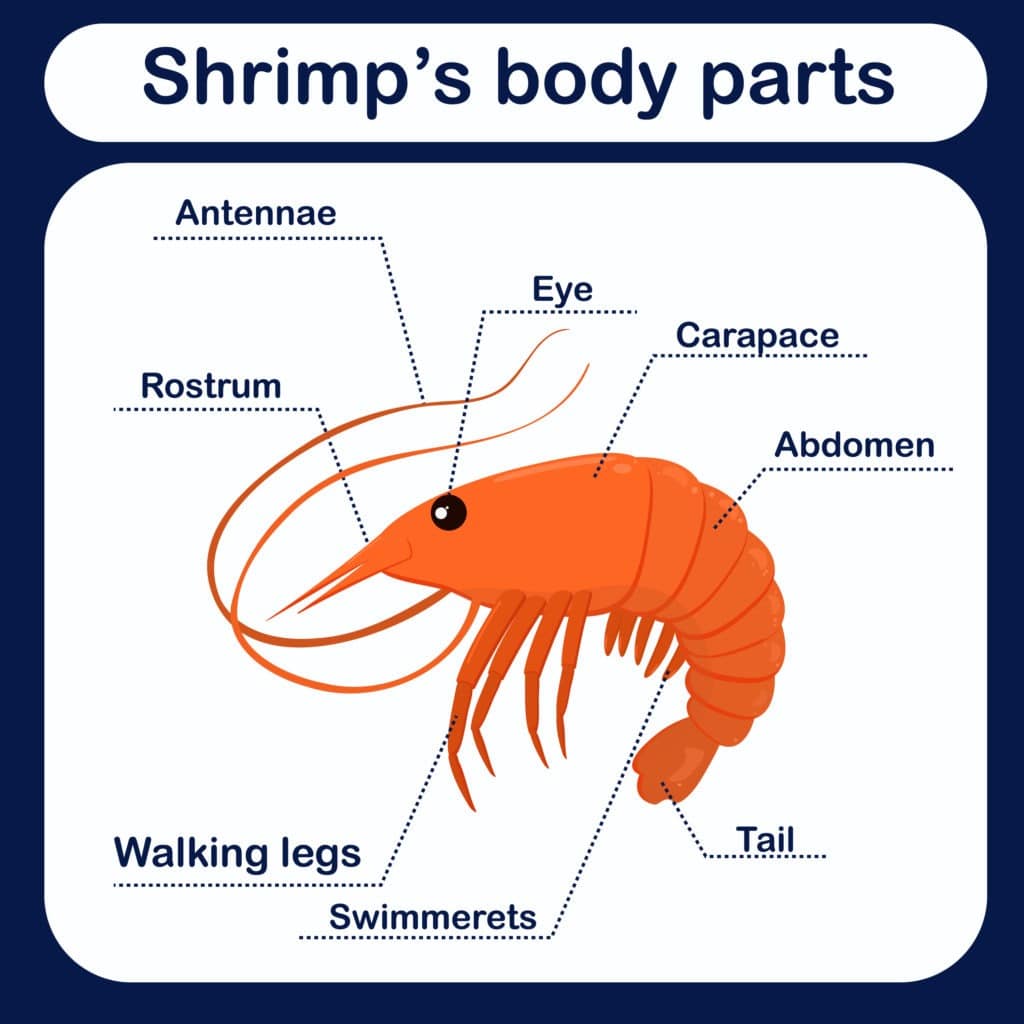
This class, which now can be designated as a subphylum, contains over 67,000 species which includes, but is not limited to:
- Crabs
- Crayfish
- Krill
- Woodlice
Crustaceans range in size from:
- Smallest: Stocki of 0.004 inches.
- Largest: Japanese spider crab reaching up to 12 feet weighing 42 pounds.
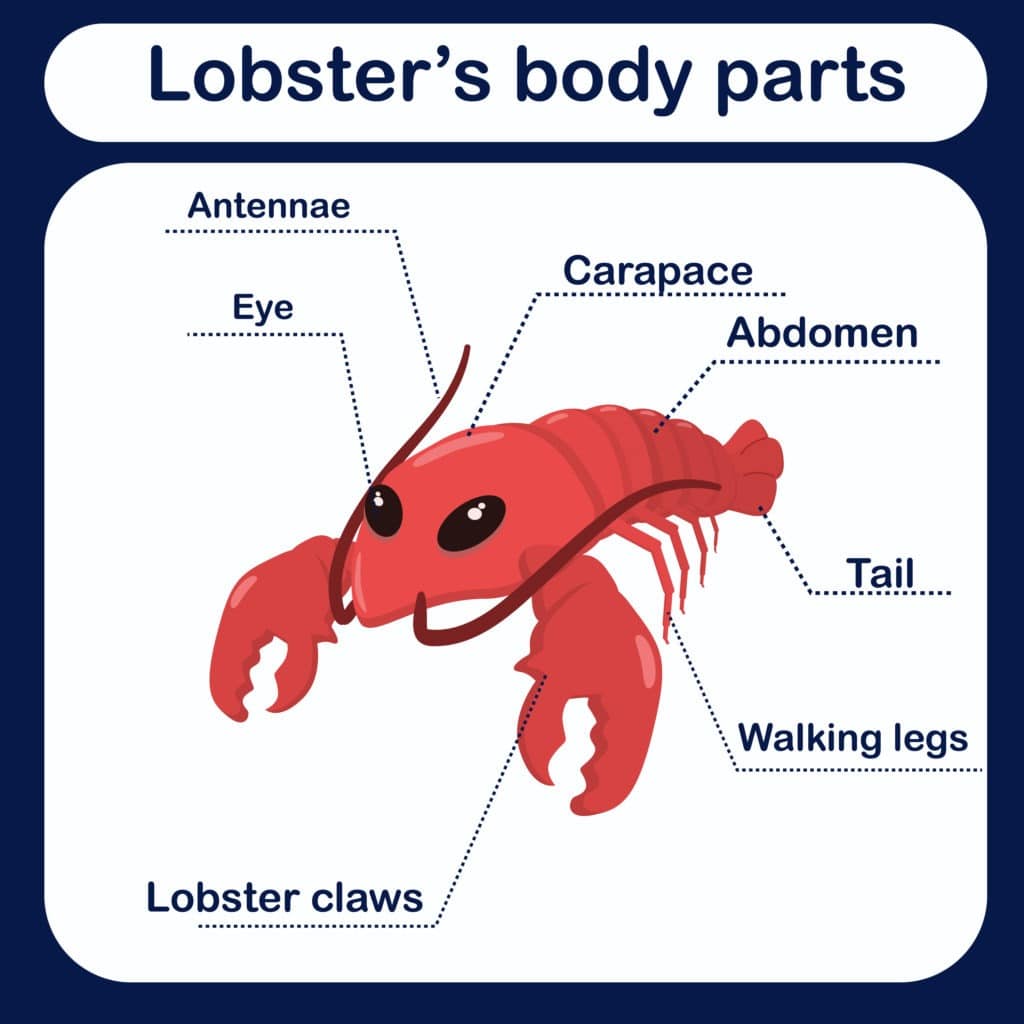
Most crustaceans are aquatic, but some are terrestrial such as hermit crabs and woodlice.
The bodies of crustaceans look similar to insects:
- Similar shape
- Presence of antennae
- Hard exoskeleton which is replaced occasionally (molting)
- Jointed appendages
- Body is divided into three parts: Head, thorax, and abdomen
But, crustaceans are different to insects.
Okay, How Are Lobsters and Shrimps Different From Insects?
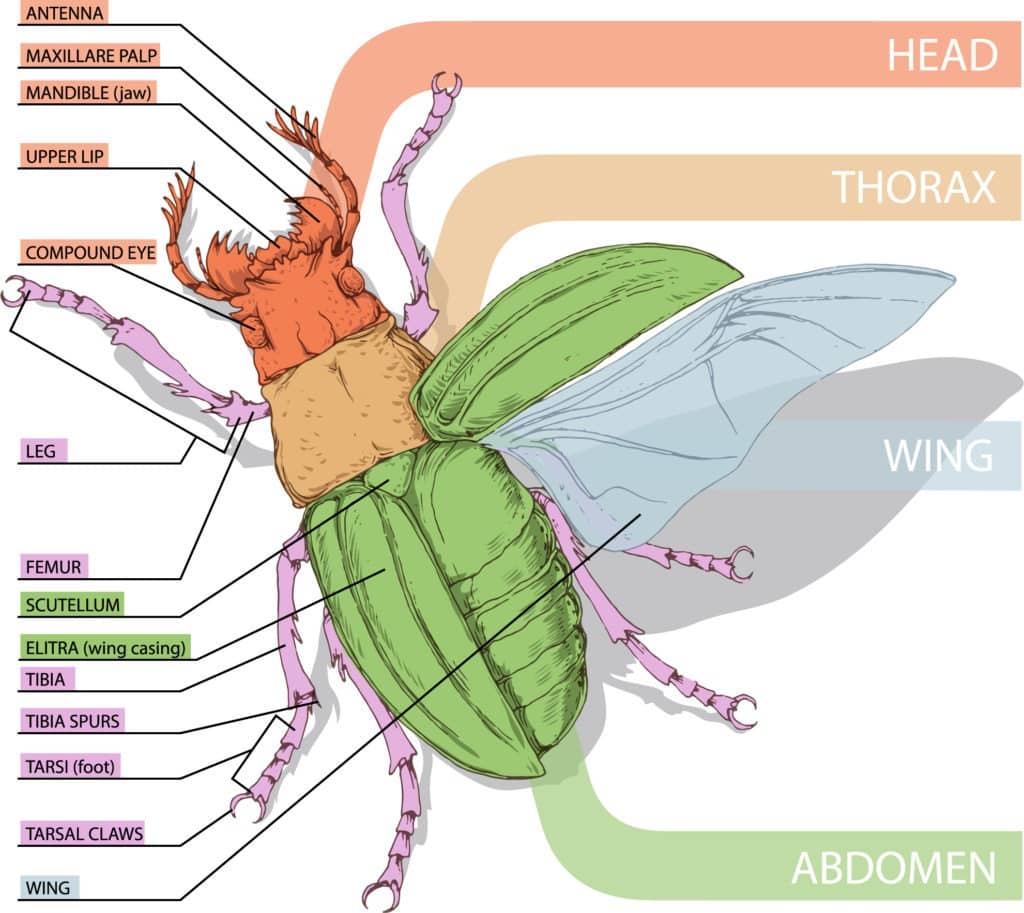
Body Segmentation
- The body of insects is divided into three parts:
- Head
- Thorax
- Abdomen
- In lobsters and shrimps, the head and thorax are fused, forming cephalothorax.
- The abdomen of shrimps is further segmented, unlike insects.
Number and Shape of Legs (Appendages)
- Insects have six legs arranged in three pairs.
- Shrimps and lobsters have more than three pairs of legs, and most of them are decapods, i.e., they have 10 pairs of appendages.
- Their legs are biramous, i.e. legs are further branched into two, which are modified for:
- Walking
- Swimming
- Filter-feeding
- Sperm transfer
Adaptation to Land Habitat
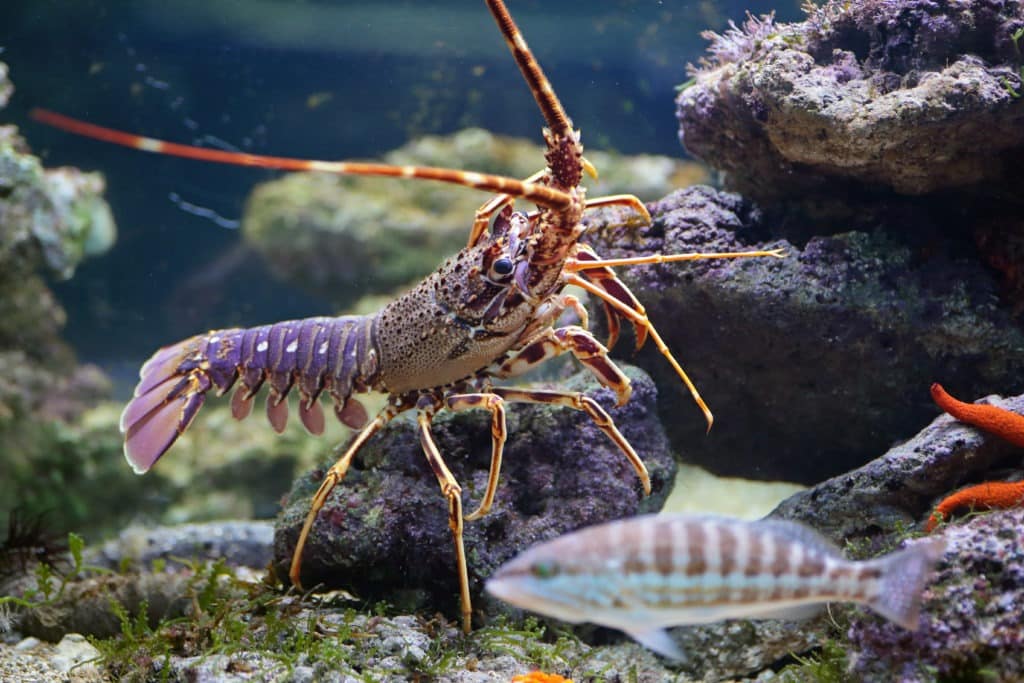
- Insects are the most successful arthropods which are adapted to almost every habitat:
- Water
- Land
- Deserts
- Even bodies of animals
- Lobsters and shrimps are mostly adapted to aquatic habitats, with most being marine. However, some live in freshwater, and a small number inhabit land.
Larval Stages
- The larval stages of insects are very simple:
- Egg
- Larva
- Pupa
- Adult
- All these stages are different from each other in appearance.
- An egg produces a larva called a nauplius in crustaceans, which is converted into zoeal and then shifts into a post-larval stage. The post-larval immature crustaceans look similar to the adults.
Composition of Exoskeleton
- All the arthropods have a hard, waterproof exoskeleton for the protection and the attachment of internal muscles.
- The exoskeleton in insects is composed of a thick waxy cuticle made up of chitin.
- But the exoskeleton of crustaceans (shrimp and lobster) is further hardened by calcium carbonate.
Gills
Insects and crustaceans have two different respiratory systems:
- Insects breathe with a system of tiny holes (spiracles) present in their exoskeleton and an internal system of tubes called tracheae. Even aquatic insects breathe via small tubes called siphons and some of them can store oxygen in their vacuoles.
- Crustaceans breathe via gills and apply a mechanism similar to fish. But, their legs are adapted to pump the water into the gill cavity.
Excretory System
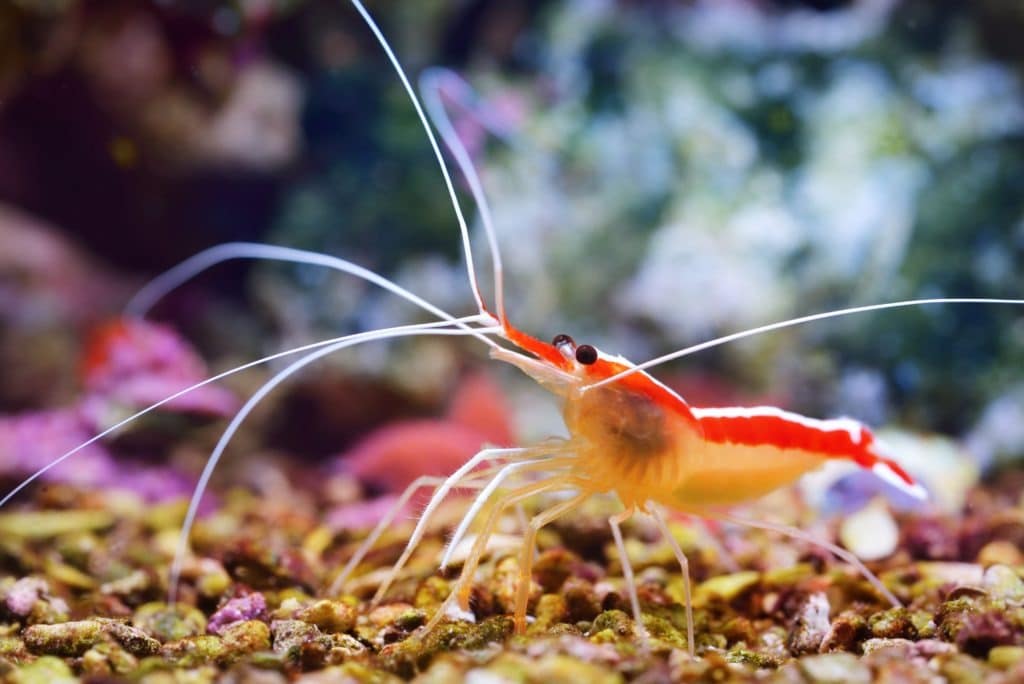
- The excretion in insects is simpler and is associated with the digestive system. They have several blind-ended tubes called malpighian tubules, which are attached to the gut. These absorb the waste materials from the body fluid and add them into the digestive wastes.
- Crustaceans have more developed mechanisms for excretion. They have antennal and maxillary glands, which are adapted to excrete the waste products. Also, some of the crustaceans, like lobsters, have kidney-like structures in their heads.
- Moreover, insects have uric acid as the main excretory nitrogenous product while shrimps and lobsters excrete nitrogen in the form of ammonia.
Antennae and Wings
- Antennae:
- Insects have one pair of antennae.
- Crustaceans either have no antennae or two pairs of antennae.
- Wings:
- Insects have one or two pairs of wings because they are adapted to the terrestrial mode of life.
- Lobsters and shrimps don’t have wings because they are mostly aquatic.
So What Are Shrimps?
Whenever I hear the word shrimp, it reminds me of the character Bubba of the movie Forrest Gump and his historic words:
Shrimp is the fruit of the sea. You can barbecue it, boil it, broil it, bake it, sauté it. Shrimp kabob, shrimp Creole, shrimp gumbos. Pineapple shrimp, coconut shrimp, pepper shrimp, shrimp soup, shrimp stew, shrimp salad, shrimp and potato, shrimp burger, shrimp sandwich …
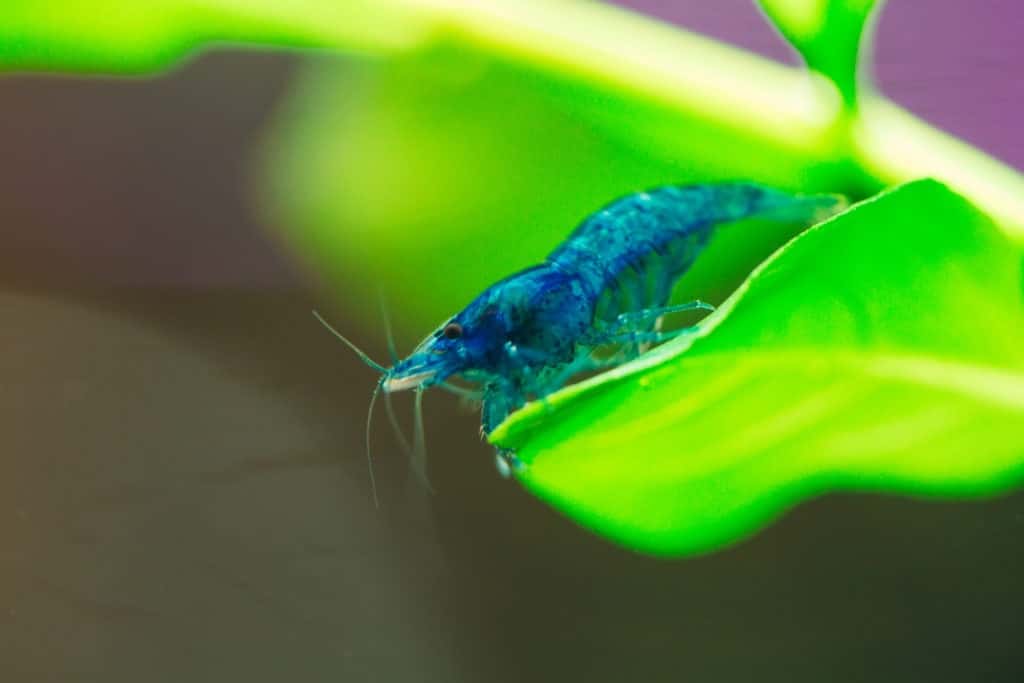
Shrimps range in size from:
- Fairy shrimp: 0.24-1 inches
- Mantis shrimp: 3.17 feet
Most shrimps live in the sea (marine) environments, but some live in freshwater, such as the red cherry shrimp, the tiger shrimp (according to some studies).
What Do Shrimps Eat?
Most shrimps are omnivores, i.e., they eat both vegetations such as algae and non-veggie foods.
Cleaner shrimps eat the necrotic tissue from the fishes they groom.
Some shrimps are filter-feeders, i.e., they sieve the water through their body and eat the sludge and grub.
Can Shrimps Speak?
Obviously, they don’t have a larynx (voice box), but snapping shrimps close their claws in a way that creates a sound.
Sometimes, shrimp colonies become a major source of noise in the sea and can interfere with the underwater communication systems.
Body Parts of a Shrimp
Their body is made up of two parts:
- Cephalothorax (fused head and thorax) bears long antennae and is covered by a hard piece of exoskeleton called the carapace.
- The characteristic long, slender, segmented, and muscular abdomen.
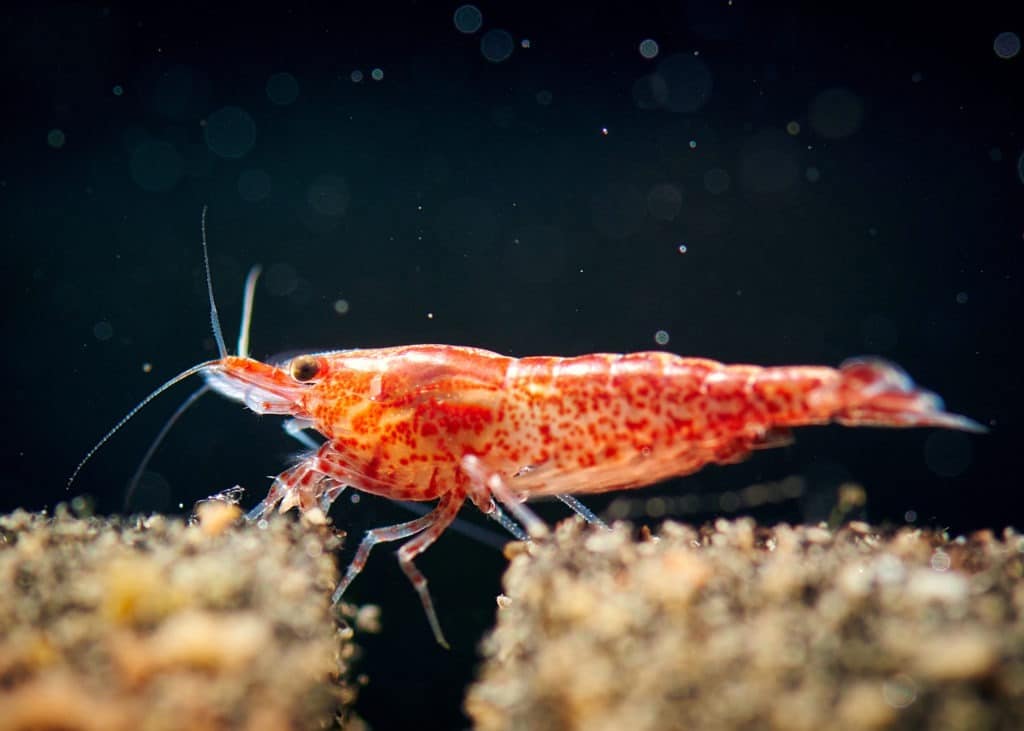
Most shrimps are decapods (having 10 pairs of appendages), such as the common commercial shrimp called “true shrimp.” But, there are a lot are non-decapods as well, such as tadpole shrimp and opossum shrimp.
Cephalothorax
- The cephalothorax has a pair of compound eyes on the outside, and a small brain made up of ganglia (clusters of neurons) inside.
- Eight pairs of appendages originated from this region:
- First three pairs are called jaw feet.
- Remaining five pairs are called pereiopods.
Abdomen
- A shrimp’s abdomen is divided into six segments.
- First five segments have a pair of legs modified for swimming called pleopods.
- The last segment contains two pairs of joined appendages (legs) called uropods.
So What Are Lobsters?
Have you ever eaten a lobster tail?
The very first time I tried it, I thought I was about to vomit because I didn’t know how to eat it. Once I learned, I found it is very delicious food to eat.
These thick-tailed, clawed cousins of shrimps are a somewhat pro-max version of shrimp.
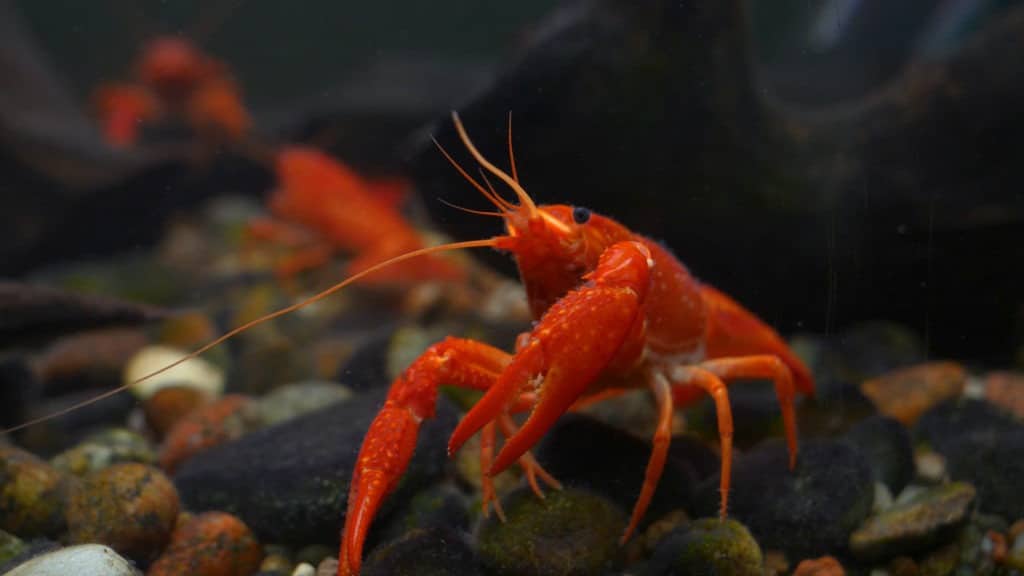
They seem to be a combination between a shrimp and a crab.
Lobsters are omnivores. They eat:
- Fishes
- Mollusks
- Other invertebrates
- Vegetation
They live in burrows and crevices on the seafloor.
Body Parts of a Lobster
They have short abdomen (contrary to shrimps) and may or may not have large claws.
Spiny lobster and slipper lobster don’t have claws and are not related to clawed lobsters.
Lobsters are decapods too, but their legs are not fully adopted for swimming as in shrimp. They walk like crabs. Some of them may swim.
Like shrimps and insects, lobsters have to shed their hard exoskeleton to grow in size because the exoskeleton is not living tissue.
Contrary to vertebrates, they can add new muscular tissue during their adult life and may reach up to 44 pounds (a world record).
They use antennae as their sense organs more than their reflective eyes.
Lobsters Never Get Old
They may reach up to 50 years of age but remain young due to an enzyme called telomerase which works to repair their DNA segments.
